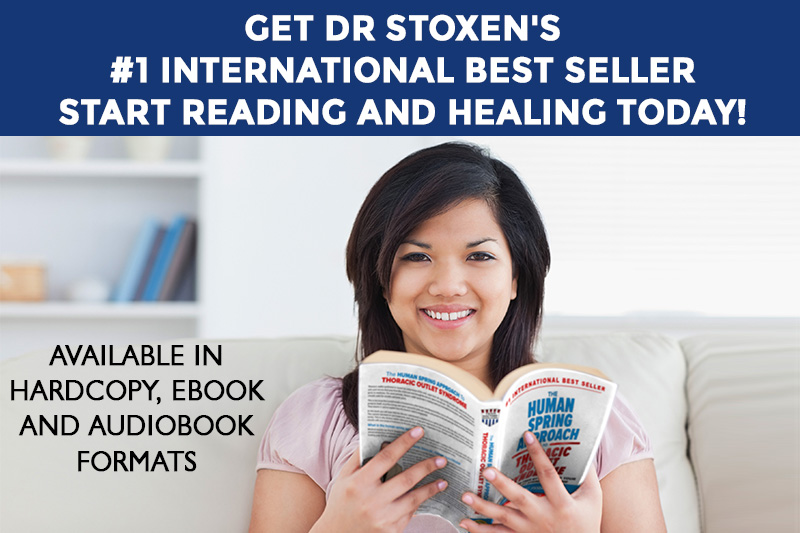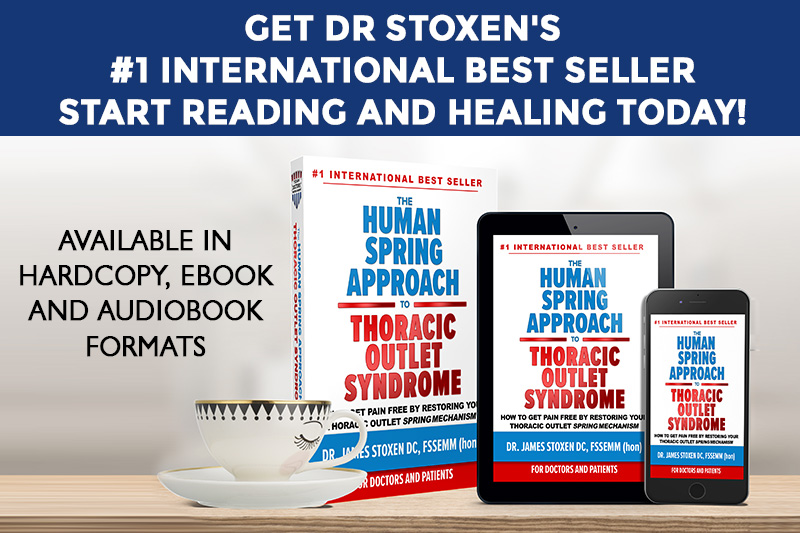Blood Clots, Embolisms, and Death?
Paget-Schroetter syndrome or effort thrombosis, is a complication of venous thoracic outlet syndrome that got out of control!
This is a condition where the compression of the vein in your shoulder gets so bad that a blood clot forms that blocks the blood flow out of your arm. This can get really scary, really fast.
If the clot breaks away from the vein, it can travel through the circulation all the way to your lung (pulmonary embolism) and cause what is called a lung infarction. This can lead to temporary or permanent difficulty breathing, or in some cases death.
Most doctors tell the nurse to get you to the operating room right away. Not so fast . . . Read on . . .

Paget-Schroetter Syndrome or Effort Thrombosis
Effort thrombosis, or Paget-Schroetter syndrome, is an outcome of venous thoracic outlet syndrome that got much worse! It is when the compressed vein in your chest under your collarbone (axillary- subclavian vein) has a blood clot (thrombosis). This is usually associated with strenuous and repetitive activity of the upper extremities.
This is not thoracic outlet syndrome or a type of it. It is a complication of venous thoracic outlet syndrome. Venous thoracic outlet syndrome is caused by vein compression with or without a blood clot. Paget-Schroetter syndrome or effort thrombosis is caused by subclavian vein compression with a blood clot.
So if you have effort thrombosis, aka Paget-Schroetter syndrome, you have effort thrombosis (Paget- Schroetter syndrome) caused by thoracic outlet syndrome (1) (2).
Signs and Symptoms
The primary symptom is arm swelling, frequently accompanied by cyanosis, pain, and occasionally paresthesia (6). Cyanosis is a blue discoloration of the skin and mucous membranes resulting from inadequate oxygenation of the blood.
Symptoms can be excruciating deep pain the chest, shoulder, and entire upper extremity, accompanied by a feeling of heaviness that occurs especially after activity. The patient will present with cyanotic discoloration and distended collateral veins, potentially accompanied by edematous increases in the volume of the extremity (the arm is swollen) (7).
Collateral veins form when the subclavian vein is narrowed or blocked. They form and widen to allow the blood to flow around the blocked subclavian vein. It would be similar to what happens when the main highway is blocked, so you get off the highway and take side streets. The side streets are the collateral veins.
Swelling and arm discomfort are the most frequent presenting problems. Other symptoms include heaviness, redness of arm, cyanosis, and dilated, visible veins across the shoulder and upper arm (Urschel’s sign) (1). Subclavian vein effort thrombosis can present itself as a rapid swelling of the entire arm, often with a blue discoloration, heaviness, and pain (8).
The symptoms of subclavian vein effort thrombosis are as follows.
- A heaviness after activity
- A deep pain in the chest
- A cyanotic (blue) discoloration in the arms
- A redness discoloration in the arms
- Some distended and dilated collateral veins—Urschel’s sign
- Some visible edema and swelling
- Discomfort
Signs You Might Have Paget-Schroetter Syndrome
- Arm swelling is usually substantial
- Fatigue
- Tightness
- Heaviness
- Pain in the arm, especially with use or overhead positioning
Many who get this have enlarged veins in the upper arm, around the shoulders, or in the upper front of the chest wall.
This is an excerpt from a chapter in Dr Stoxen’s #1 best seller The Human Spring Approach to Thoracic Outlet Syndrome. The book is available on Amazon.com in these 13 counties US UK DE FR ES IT NL JP BRCA MX AU IN on Kindle. The book is available on Amazon.com in these 7 counties US UK DE FR ES IT JP in paperback.
Order your copy and start reading and healing today.


Dr James Stoxen DC., FSSEMM (hon) He is the president of Team Doctors®, Treatment and Training Center Chicago, one of the most recognized treatment centers in the world.
Dr Stoxen is a #1 International Bestselling Author of the book, The Human Spring Approach to Thoracic Outlet Syndrome. He has lectured at more than 20 medical conferences on his Human Spring Approach to Thoracic Outlet Syndrome and asked to publish his research on this approach to treating thoracic outlet syndrome in over 30 peer review medical journals.
He has been asked to submit his other research on the human spring approach to treatment, training and prevention in over 150 peer review medical journals. He serves as the Editor-in-Chief, Journal of Orthopedic Science and Research, Executive Editor or the Journal of Trauma and Acute Care, Chief Editor, Advances in Orthopedics and Sports Medicine Journal and editorial board for over 35 peer review medical journals.
He is a much sought-after speaker. He has given over 1000 live presentations and lectured at over 70 medical conferences to over 50,000 doctors in more than 20 countries. He has been invited to speak at over 300 medical conferences which includes invitations as the keynote speaker at over 50 medical conferences.
After his groundbreaking lecture on the Integrated Spring-Mass Model at the World Congress of Sports and Exercise Medicine he was presented with an Honorary Fellowship Award by a member of the royal family, the Sultan of Pahang, for his distinguished research and contributions to the advancement of Sports and Exercise Medicine on an International level. He was inducted into the National Fitness Hall of Fame in 2008 and the Personal Trainers Hall of Fame in 2012.
Dr Stoxen has a big reputation in the entertainment industry working as a doctor for over 150 tours of elite entertainers, caring for over 1000 top celebrity entertainers and their handlers. Anthony Field or the popular children’s entertainment group, The Wiggles, wrote a book, How I Got My Wiggle Back detailing his struggles with chronic pain and clinical depression he struggled with for years. Dr Stoxen is proud to be able to assist him.
Full Bio) Dr Stoxen can be reached directly at teamdoctors@aol.com























